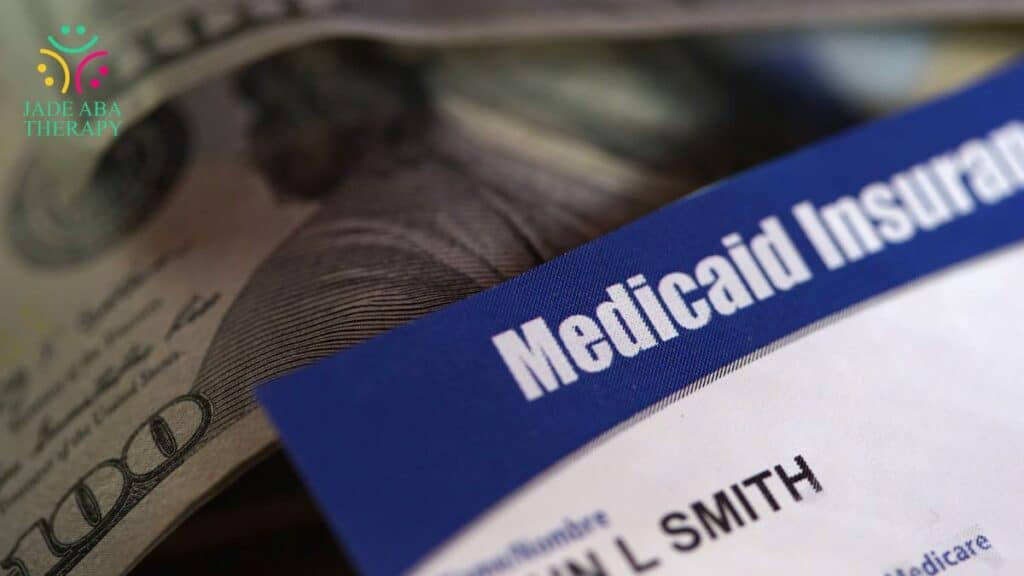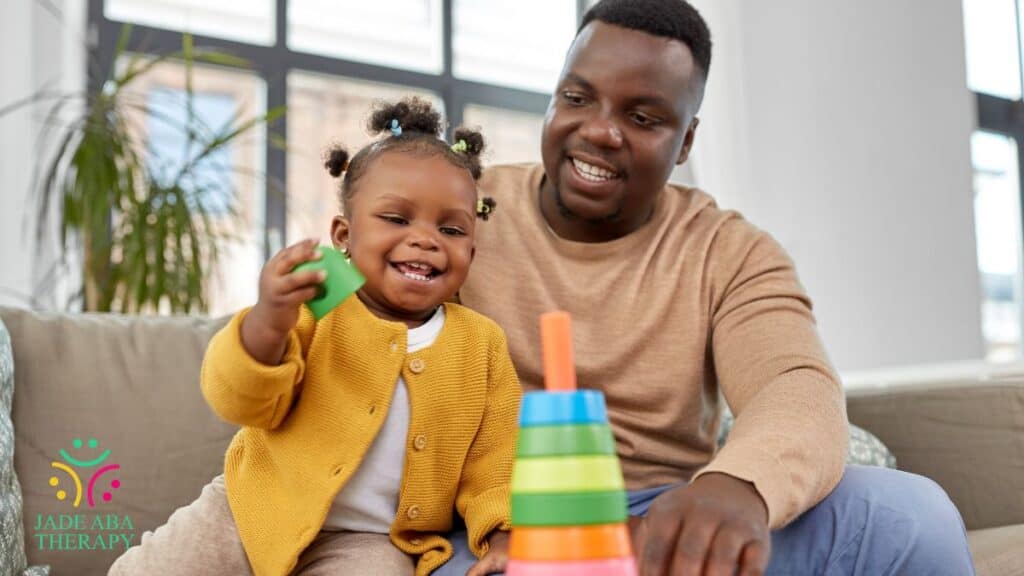Key Points:
- In-home ABA therapy in Maryland works better when commute times cut into sessions, behavior happens at home, or school schedules shift often.
- Medicaid covers home-based care when medically needed.
- Home sessions align with real routines and preserve hours lost to traffic or clinic limits.
Many Maryland parents deal with school bus schedules, long Beltway commutes, and insurance steps before ABA therapy begins. In-home ABA therapy in Maryland helps ease that process. The therapist visits the child at home, sessions fit naturally into daily routines, and Medicaid already covers home-based ABA when it is medically needed.
Below is a Maryland-focused guide to know when home-based ABA works better than center sessions, how to align therapy with public school schedules, and what to confirm with your insurance before deciding where to start.

Why Maryland Families Compare Settings Differently
Maryland is small on the map, but many families drive 25–35 minutes each way because of D.C.–Baltimore traffic. The average commute in Baltimore is about 29.4 minutes, which is already half of a typical ABA session.
Center-based ABA therapy in Maryland works very well for children who need structured spaces, but families comparing home vs center ABA sometimes find that getting to those clinics from Prince George’s, Anne Arundel, Charles, or even parts of Montgomery during rush hour can cut therapy time. Traffic incidents on BW Parkway or I-95 make it worse.
Public schools in Maryland decide their own calendars and professional days. That means a child in Howard County may be off when a sibling in Baltimore County is not. Families need ABA therapy options in Maryland that can shift around those days.
When families should look closer at home-based care:
- When the clinic is 30–40 minutes away and sessions are short. Travel begins to eat the service.
- When a child melts down in the car or transfer is hard. Home lowers the entry barrier.
- When parents want the BCBA to see real routines. Home shows meals, bedtime, siblings, and the morning rush.
When In-Home ABA Therapy in Maryland Fits Better
In-home ABA therapy in Maryland becomes the better choice when the goal is to change what actually happens in the house or in the apartment. Plus, an in-home ABA setup makes it easier for the therapist to work inside the real routines the family wants to improve.
Medicaid in Maryland already allows ABA in a home or community setting for members under 21, so it lines up well with what many children need. Home sessions help most when the main goals are:
- Following home routines. Dressing, toothbrushing, homework, transitions to the car.
- Managing behavior in shared spaces. Townhomes, multi-family setups, or living with grandparents.
- Training caregivers. By learning the right ABA parent training goals, parents can practice the plan right away instead of trying to remember it after a drive home.
A recent national surveillance report showed Maryland with a prevalence of 1 in 38 eight-year-olds identified with autism, which means more children need services in the same geographic area. Home-based services help families in neighborhoods with fewer clinics or long waitlists.
Home is especially useful for:
- Eastern Shore and Southern Maryland families who do not have many centers nearby.
- Families in high-traffic corridors like Laurel, Bowie, or Silver Spring, where late afternoon drives are unpredictable.
- Children whose schools report progress but home still sees aggression or tantrums. The therapist needs to see the triggers in context.
How Commute, Traffic, and After-School Hours Affect the Choice
Maryland traffic changes the math. A 2-hour center slot becomes 90 minutes of real ABA after a 30-minute drive. An evening slot after 4:00 p.m. may stretch to 5:00 p.m. because of congestion in the D.C.–Maryland–Virginia corridor.
The Maryland State Department of Education requires 180 instructional days, so most students are in school most weekdays, leaving 3 common windows for ABA: early morning, right after school, or early evening. Home-based ABA can grab the right-after-school window faster because the therapist can arrive before the school bus on half days.
How to decide using time and location:
- Map the week. List school start and end times for your county, including early-release Wednesdays or teacher days.
- Add commute and sibling pickup. If you drive to two schools, center-based ABA Maryland options may be hard to reach on time.
- Check traffic reports for your route. If 495 or 97 is often slow at the exact time your child would travel, in-home is more reliable.
Center-based ABA therapy Maryland families choose often works best for children who need peers, clinic materials, or distraction-free rooms. For children who cannot reliably get there on time, in-home becomes the best ABA therapy setting Maryland can offer because it preserves hours.
How School Collaboration Works Better at Home
Maryland districts encourage collaboration for IEPs, but many BCBA schedules are tight. When ABA is in the home, the therapist can align targets with what the school is currently reinforcing.
Maryland calendars also include county-specific breaks, testing windows, and parent-conference days. On those days, an in-home ABA session can happen midday, which is harder to do with a center slot.
Ways home ABA supports what schools are doing:
- Practice IEP skills in the afternoon. If the IEP says “request help verbally,” the therapist can set up home tasks right away.
- Coach for bus and morning routines. This is highly relevant for Montgomery, Prince George’s, and Anne Arundel families that start early.
- Meet virtually with teachers. Parents and BCBAs can join school staff during breaks without losing the whole day to driving.
When Maryland parents compare ABA therapy options, home sessions often work better for carryover because the therapist is already in the environment where the behavior happens.

Insurance and Medicaid Rules Maryland Families Should Check
The Maryland Department of Health covers medically necessary ABA for Medicaid members under 21 in home and community settings. The ABA therapy and Medicaid coverage in Maryland guidelines confirm that home visits can meet the requirement when the service is justified. The program is administered through Carelon/Optum for many families, and services are reviewed for medical need.
Commercial insurers may ask:
- Whether the child needs center-level structure
- Whether caregiver training can be done at home
- Whether hours overlap with school
Before choosing a setting, ask the plan:
- Does my plan cover ABA in the home in my county? Some plans have location notes.
- Do I need preauthorization for home sessions or parent training?
- Can I mix home and center in the same plan year? Many Maryland families like a hybrid model.
When ABA therapy options Maryland families review include both home and center in the same county, insurance flexibility, and ABA therapy cost Maryland-wide details often decide it
Quick Maryland Checklist: Is Home ABA the Better Fit?
Use this list instead of the usual generic pros-and-cons chart.
- School fit: My child’s county has early dismissals or different start dates from nearby counties, so I need ABA that can move around those days.
- Commute reality: My route to the clinic is over 25 minutes during after-school hours.
- Home behaviors: The toughest behaviors happen at home, not at school.
- Caregiver goals: I want to be trained during real routines like dinner, bath, or getting ready.
- Insurance approval: My plan or Medicaid already allows home/community ABA.
- Local supply: My area has few centers or long waitlists, so home gets me started sooner.
- Siblings: I have to be home for other children, so leaving for 2–3 hours is hard.
If you checked 4 or more, in-home ABA therapy in Maryland will likely protect more hours than a center slot.

Frequently Asked Questions
Can families mix home and center ABA in Maryland?
Families in Maryland can mix home and center ABA therapy when the treatment plan and insurer authorization allow it. Home ABA often begins first to reduce behavior issues, while center-based ABA therapy Maryland programs expand later to support group learning and socialization. Insurer approval must confirm any change in therapy location.
What if my child’s school keeps changing dismissal times?
Frequent dismissal changes in Maryland schools disrupt schedules. Maryland school systems control their own calendars, which can shift unexpectedly. In-home ABA therapy allows flexibility because therapists work within the home and do not rely on clinic space. Notify the provider immediately when the school updates the dismissal schedule.
Do Medicaid families have to prove that home is better than center?
Medicaid families in Maryland do not need to prove that a center failed before choosing home-based services. Maryland Medicaid prioritises medical necessity, autism diagnosis, age, and safety in the home. The home setting is already included as a valid service location. The BCBA explains how the home supports the treatment goals.
Start Personalized ABA Support at Home
Choosing where ABA happens decides how easy it will be to keep appointments during Maryland’s 180-day school year, traffic around D.C. and Baltimore, and county-specific calendars. ABA home services in Maryland and Virginia let the therapist work right where the child eats, plays, and starts to show challenging behavior.
Jade ABA Therapy provides in-home ABA therapy for children with autism so families do not lose time to commuting or calendar changes. Our BCBAs build programs that match school goals and fit around local district schedules.
If your week is already full of driving, or if you want ABA that targets real moments at home, reach out and set up an in-home start so your child can practice skills where they will use them.




